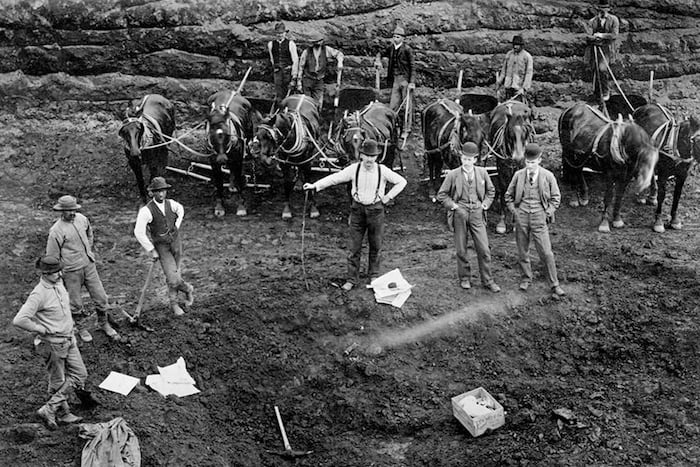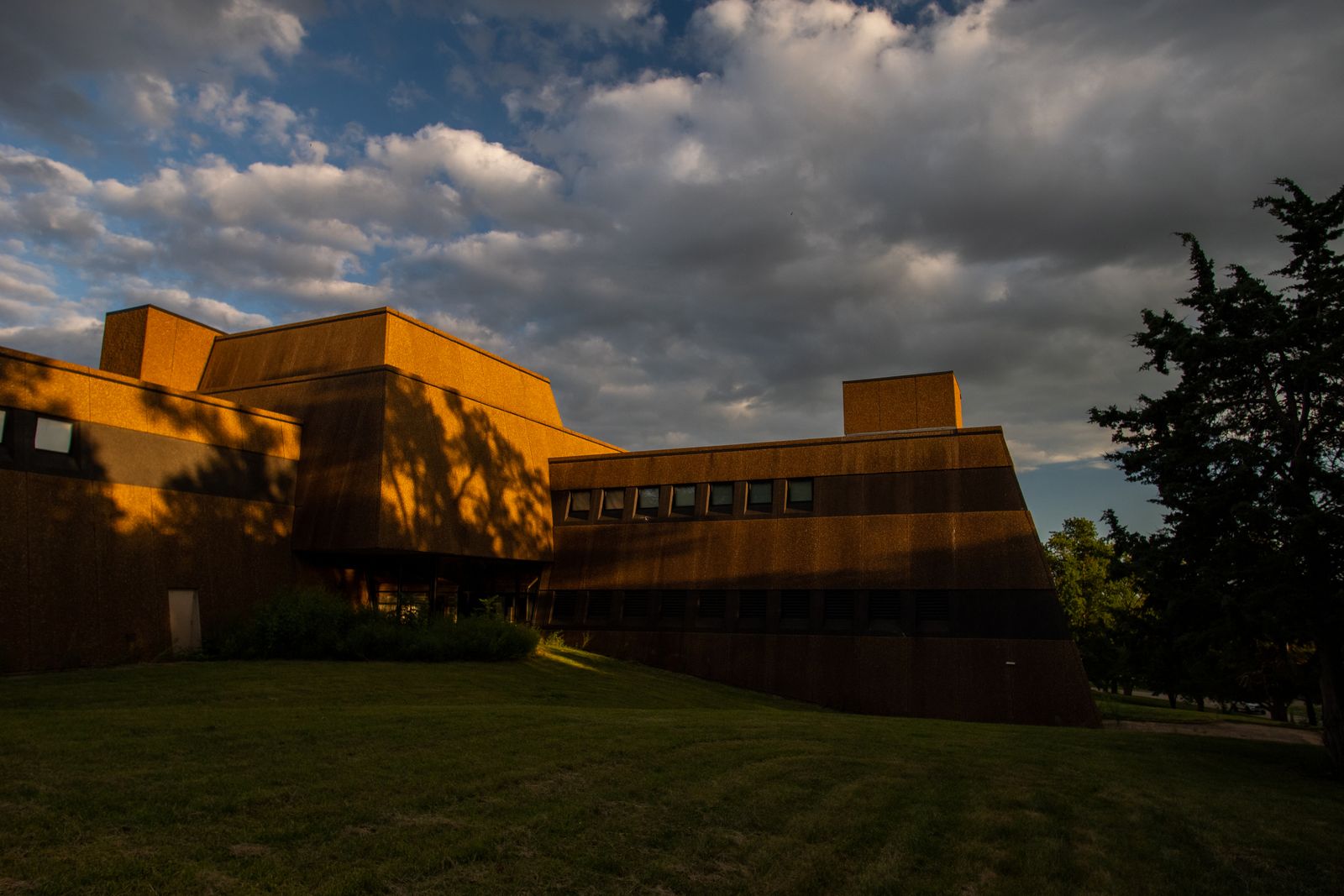Montezuma County, Colorado
Institutions reported making 94% of the more than 2,500 Native American remains taken from Montezuma County, Colorado available for return to tribes under NAGPRA.
There are 28 institutions that reported Native American remains taken from Montezuma County, Colorado.
| Institution | Remains Not Made Available for Return | Remains Made Available for Return | % of Remains Made Available for Return |
|---|---|---|---|
| Harvard University | 58 | 0 | 0% |
| Field Museum | 44 | 0 | 0% |
| American Museum of Natural History | 17 | 0 | 0% |
| Hastings Museum | 5 | 0 | 0% |
| Natural History Museum of Utah | 5 | 0 | 0% |
| Western Colorado University | 4 | 0 | 0% |
| Wichita State University, Department of Anthropology | 3 | 0 | 0% |
| New York University, College of Dentistry | 2 | 0 | 0% |
| Rocky Ford Historical Museum | 2 | 0 | 0% |
| Dartmouth College, Hood Museum of Art | 1 | 0 | 0% |
| Putnam Museum | 1 | 0 | 0% |
| Saint Martin's University Waynick Museum | 1 | 0 | 0% |
| University of Nebraska State Museum | 1 | 0 | 0% |
| University of Texas, El Paso, Centennial Museum | 1 | 0 | 0% |
| West Texas A and M University, Panhandle-Plains Historical Museum | 1 | 0 | 0% |
| Central Michigan University, Museum of Cultural and Natural History | 0 | 1 | 100% |
| Colorado State University | 0 | 1 | 100% |
| Denver Museum of Nature and Science | 0 | 1 | 100% |
| Fort Lewis College | 0 | 20 | 100% |
| History Colorado | 0 | 198 | 100% |
| Metropolitan State University of Denver, Department of Sociology and Anthropology | 0 | 5 | 100% |
| Michigan State University | 0 | 3 | 100% |
| Robert S. Peabody Institute of Archaeology, Phillips Academy | 0 | 1 | 100% |
| U.S. Department of the Interior | 0 | 1,876 | 100% |
| University of Colorado Museum | 0 | 262 | 100% |
| University of Denver, Museum of Anthropology | 0 | 2 | 100% |
| University of Iowa, Office of the State Archaeologist | 0 | 1 | 100% |
| University of Texas at Austin, Texas Archeological Research Laboratory | 0 | 2 | 100% |
Institutions made Native American remains taken from Montezuma County, Colorado available for return to 38 tribes.
| Tribe | Remains Made Available for Return to Tribe |
|---|---|
| Pueblo of Acoma, New Mexico | 2,359 |
| Pueblo of Zia, New Mexico | 2,359 |
| Zuni Tribe of the Zuni Reservation, New Mexico | 2,359 |
| Ohkay Owingeh, New Mexico (formerly the Pueblo of San Juan) | 2,357 |
| Pueblo of Jemez, New Mexico | 2,357 |
| Pueblo of Laguna, New Mexico | 2,357 |
| Pueblo of Nambe, New Mexico | 2,357 |
| Pueblo of Picuris, New Mexico | 2,357 |
| Pueblo of Pojoaque, New Mexico | 2,357 |
| Pueblo of San Ildefonso, New Mexico | 2,357 |
| Pueblo of Santa Clara, New Mexico | 2,357 |
| Pueblo of Taos, New Mexico | 2,357 |
| Pueblo of Tesuque, New Mexico | 2,357 |
| Hopi Tribe of Arizona | 2,348 |
| Pueblo of Isleta, New Mexico | 1,995 |
| Pueblo of San Felipe, New Mexico | 1,995 |
| Pueblo of Santa Ana, New Mexico | 1,995 |
| Pueblo of Sandia, New Mexico | 1,992 |
| Pueblo of Cochiti, New Mexico | 1,990 |
| Santo Domingo Pueblo | 1,990 |
| Ysleta del Sur Pueblo | 1,990 |
| Navajo Nation, Arizona, New Mexico and Utah | 1,516 |
| Ute Mountain Ute Tribe | 18 |
| Southern Ute Indian Tribe of the Southern Ute Reservation, Colorado | 16 |
| Apache Tribe of Oklahoma | 8 |
| Fort Belknap Indian Community of the Fort Belknap Reservation of Montana | 5 |
| Ute Indian Tribe of the Uintah and Ouray Reservation, Utah | 5 |
| Colorado River Indian Tribes of the Colorado River Indian Reservation, Arizona and California | 3 |
| Fort McDowell Yavapai Nation, Arizona | 3 |
| Fort Sill Apache Tribe of Oklahoma | 3 |
| Jicarilla Apache Nation, New Mexico | 3 |
| Mescalero Apache Tribe of the Mescalero Reservation, New Mexico | 3 |
| San Carlos Apache Tribe of the San Carlos Reservation, Arizona | 3 |
| Tonto Apache Tribe of Arizona | 3 |
| White Mountain Apache Tribe of the Fort Apache Reservation, Arizona | 3 |
| Yavapai-Apache Nation of the Camp Verde Indian Reservation, Arizona | 3 |
| Northern Arapaho Tribe of the Wind River Reservation, Wyoming | 1 |
| Northern Cheyenne Tribe of the Northern Cheyenne Indian Reservation, Montana | 1 |
Know how an institution is handling repatriation? Have a personal story to share? We'd like to hear from you.
Watch an informational webinar with our reporters.
This tool presents a dataset maintained by the National Park Service containing all the Native American human remains and associated funerary objects that institutions have reported to the federal government under the Native American Graves Protection and Repatriation Act. The dataset includes information about the state and county where remains and objects were taken from, which institutions hold them and whether they have been made available for return to tribes.
The data is self-reported by institutions. The amount of unrepatriated Native American remains reported by institutions is a minimum estimate of individuals and institutions frequently adjust these numbers when they reinventory groups of remains. Some institutions that are subject to NAGPRA have also entirely failed to report the remains in their possession. As a result, the numbers provided are best taken as estimates. The actual number and geographic scope of what’s held by publicly funded institutions is larger than what is presently documented.
ProPublica supplemented this dataset with information about cultural affiliation and disposition to specific tribes by systematically parsing the text of Notices of Inventory Completion published in the Federal Register. An additional dataset from the Department of Housing and Urban Development, the Tribal Directory Assessment Tool, was used for the section on remains not made available for return from counties that each tribe has indicated interest in to the federal government.
Institution location and tribal headquarters location information was provided by National NAGPRA. The location of some groups that are not federally recognized was provided through research by ProPublica.
Institutions that are part of a larger entity are grouped. (For example, the Mesa Verde National Park is part of the U.S. Department of the Interior.)
Institutions that have not submitted information to the federal government are not listed. The Smithsonian Institution is not listed because its repatriation process falls under the National Museum of the American Indian Act and it is not required to publicly report its holdings with the same detail as institutions subject to NAGPRA.
If you work for an institution and would like to provide comment on your institution’s repatriation efforts, please email [email protected]. If you think the data is incorrect or have a data request, please get in touch. We are aware of some issues with the accuracy of location information and tribes mistakenly being identified for disposition of Native American remains in published notices.
If you want to share something else with ProPublica, we’d like to hear from you.
If you have questions about implementing or complying with the Native American Graves Protection and Repatriation Act, get in touch with National NAGPRA or the NAGPRA Community of Practice.
We use the word “tribes” to refer to all groups that institutions made Native American remains available to under NAGPRA. This includes tribes, nations, bands, pueblos, communities, Native Alaskan villages, Native Hawaiian organizations and non-federally recognized groups.
Data sources from Department of the Interior, National Park Service, National NAGPRA Program, the Federal Register, Department of Housing and Development, Tribal Directory Assessment Tool


